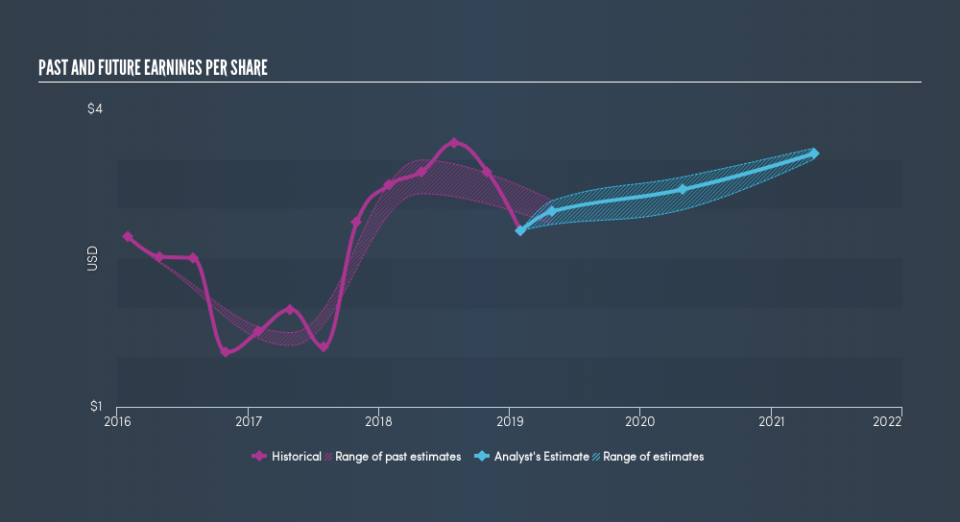The John Wiley & Sons (NYSE:JW.A) Share Price Is Down 31% So Some Shareholders Are Getting Worried

Passive investing in an index fund is a good way to ensure your own returns roughly match the overall market. When you buy individual stocks, you can make higher profits, but you also face the risk of under-performance. Unfortunately the John Wiley & Sons, Inc. (NYSE:JW.A) share price slid 31% over twelve months. That’s disappointing when you consider the market returned 8.5%. However, the longer term returns haven’t been so bad, with the stock down 7.9% in the last three years. Unfortunately the share price momentum is still quite negative, with prices down 14% in thirty days. Importantly, this could be a market reaction to the recently released financial results. You can check out the latest numbers in our company report.
Check out our latest analysis for John Wiley & Sons
Want to participate in a research study? Help shape the future of investing tools and earn a $60 gift card!
In his essay The Superinvestors of Graham-and-Doddsville Warren Buffett described how share prices do not always rationally reflect the value of a business. One flawed but reasonable way to assess how sentiment around a company has changed is to compare the earnings per share (EPS) with the share price.
Unfortunately John Wiley & Sons reported an EPS drop of 14% for the last year. The share price decline of 31% is actually more than the EPS drop. This suggests the EPS fall has made some shareholders are more nervous about the business.
You can see below how EPS has changed over time (discover the exact values by clicking on the image).
Before buying or selling a stock, we always recommend a close examination of historic growth trends, available here..
What about the Total Shareholder Return (TSR)?
We’d be remiss not to mention the difference between John Wiley & Sons’s total shareholder return (TSR) and its share price return. The TSR attempts to capture the value of dividends (as if they were reinvested) as well as any spin-offs or discounted capital raisings offered to shareholders. Dividends have been really beneficial for John Wiley & Sons shareholders, and that cash payout explains why its total shareholder loss of 29%, over the last year, isn’t as bad as the share price return.
A Different Perspective
While the broader market gained around 8.5% in the last year, John Wiley & Sons shareholders lost 29% (even including dividends). However, keep in mind that even the best stocks will sometimes underperform the market over a twelve month period. Regrettably, last year’s performance caps off a bad run, with the shareholders facing a total loss of 2.9% per year over five years. Generally speaking long term share price weakness can be a bad sign, though contrarian investors might want to research the stock in hope of a turnaround. If you would like to research John Wiley & Sons in more detail then you might want to take a look at whether insiders have been buying or selling shares in the company.
But note: John Wiley & Sons may not be the best stock to buy. So take a peek at this free list of interesting companies with past earnings growth (and further growth forecast).
Please note, the market returns quoted in this article reflect the market weighted average returns of stocks that currently trade on US exchanges.
We aim to bring you long-term focused research analysis driven by fundamental data. Note that our analysis may not factor in the latest price-sensitive company announcements or qualitative material.
If you spot an error that warrants correction, please contact the editor at editorial-team@simplywallst.com. This article by Simply Wall St is general in nature. It does not constitute a recommendation to buy or sell any stock, and does not take account of your objectives, or your financial situation. Simply Wall St has no position in the stocks mentioned. Thank you for reading.

